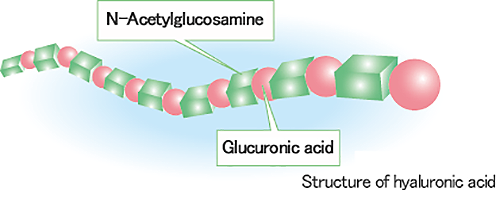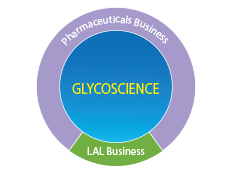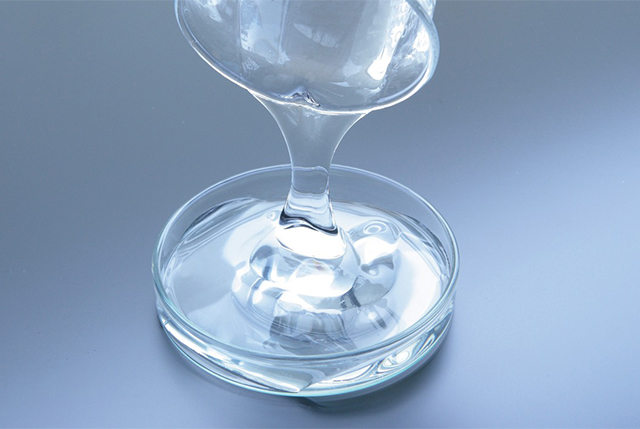Hyaluronic acid was first isolated from the bovine vitreous body in 1934 by Dr. Karl Meyer, a professor at Columbia University in the U.S. The name “hyaluronic acid” is derived from “hyaloid”, which means vitreous body in Greek, and uronic acid, which is found in large quantities in the vitreous body. Since 1986, the word "hyaluronan" has also been used by the international nomenclature of polysaccharides.

Hyaluronic acid is a linear polysaccharide. It has a repetitive structural unit composed of the disaccharides N-Acetyl-D-Glucosamine and D-glucuronic acid. Hyaluronic acid in our bodies generally exists as a high molecular weight of several million times, and has not been shown to have structural differences in different animal species.

- 拡大
- (Image view of structure of hyaluronic acid)
The development of hyaluronic acid as an intra-articular injection started with a racehorse. The racehorse was on the verge of retirement, due to inflamed joints caused by a lot of hard racing. Amazingly, following hyaluronic acid injection to its inflamed knees, the horse returned to racing, and even won! That event encouraged researchers to drive for the development of hyaluronic acid injectables for human treatment.



















